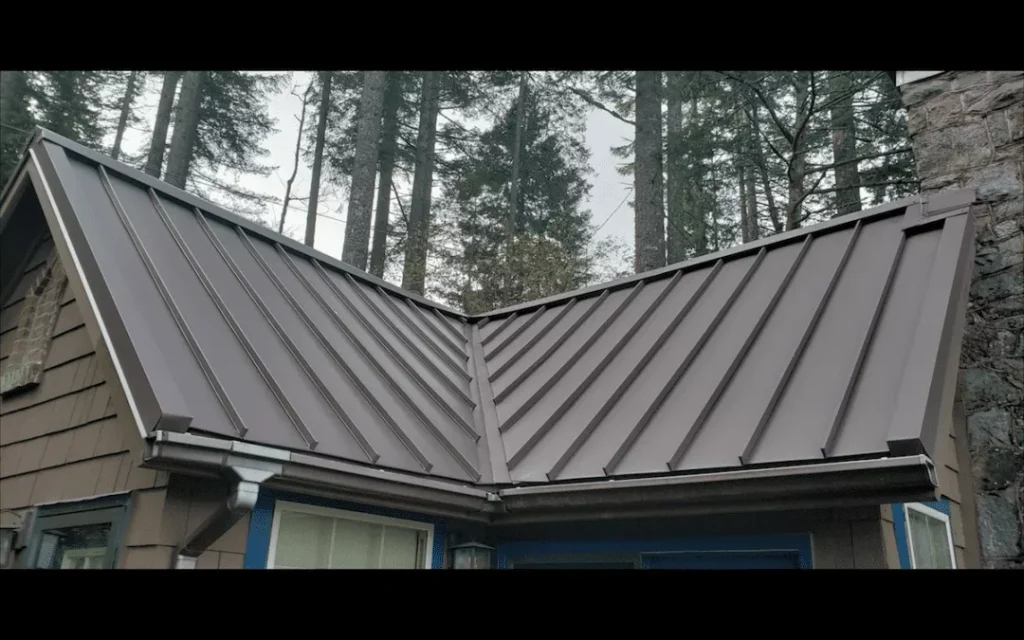When it comes to protecting your home from rainwater and potential damage, gutters play a crucial role. But what if you have a metal roof? Can you put gutters on a metal roof, and if so, how do you go about it? In this article, we’ll explore the options and considerations for installing gutters on a metal roof, ensuring your home remains safe and well-maintained.

Understanding the Need for Gutters
Before diving into the specifics of installing gutters on a metal roof, it’s important to understand why gutters are essential for your home.
1. Rainwater Management
Gutters are designed to collect rainwater and direct it away from your home’s foundation. Without gutters, rainwater can erode the soil around your foundation, leading to structural issues over time.
2. Prevention of Water Damage
Gutters also prevent water from cascading down the sides of your home, which can lead to water damage, rot, and mold growth on your siding, windows, and doors.
3. Landscape Protection
Properly installed gutters help protect your landscaping by preventing soil erosion and damage to plants and flowerbeds.
4. Basement and Crawlspace Preservation
By channeling rainwater away from your home, gutters reduce the risk of water infiltration into basements and crawlspaces, which can lead to flooding and damage.
Now that we understand the importance of gutters let’s explore whether they can be installed on a metal roof.
Installing Gutters on a Metal Roof
The good news is that it is possible to install gutters on a metal roof, just as you would on a traditional shingle or tile roof. However, there are some key considerations to keep in mind:
1. Roof Pitch
The pitch or slope of your metal roof is an important factor to consider. Gutters need to be installed at the correct angle to ensure that water flows toward the downspouts. Metal roofs can have varying degrees of pitch, so it’s crucial to determine the slope before selecting the gutter system.
2. Gutter Type
There are different types of gutter systems available, including sectional gutters and seamless gutters. Seamless gutters are often recommended for metal roofs because they are custom-made to fit your home’s dimensions, reducing the risk of leaks.
3. Attachment Method
When attaching gutters to a metal roof, it’s essential to use the appropriate fasteners and hangers. The fasteners should be designed for metal roofs and provide a secure attachment without compromising the roof’s integrity.
4. Sealants and Flashing
Proper sealing and flashing are critical to prevent water from seeping between the gutter and the roof. Sealants and flashing materials should be compatible with both the gutter system and the metal roof.
5. Downspout Placement
Careful consideration should be given to the placement of downspouts. Downspouts should be strategically located to ensure efficient water drainage and prevent water from pooling on the roof.
6. Professional Installation
While some homeowners may have the skills to install gutters themselves, it’s often best to hire a professional for this task, especially when dealing with a metal roof. Experienced installers can ensure that the gutters are correctly pitched, sealed, and attached without causing any damage to the roof.
Maintenance and Care
Once gutters are installed on your metal roof, it’s essential to maintain them regularly. Here are some tips for gutter maintenance:
- Clean your gutters regularly to remove debris and prevent clogs.
- Check for loose or damaged components and repair them promptly.
- Inspect the sealant and flashing periodically to ensure they remain in good condition.
- During the winter, keep an eye on ice dams, which can form in the gutters and cause damage. Consider installing heating elements or using other preventive measures to address this issue.
Conclusion
In conclusion, you can indeed put gutters on a metal roof to protect your home from rainwater damage. The key is to carefully consider the roof pitch, select the appropriate gutter type, use the right attachment methods, and ensure proper sealing and flashing. While it’s possible to install gutters yourself, it’s often best to enlist the expertise of a professional to ensure a secure and effective installation. With the right gutters in place, your metal roof will continue to protect your home for years to come.



Leave a Reply